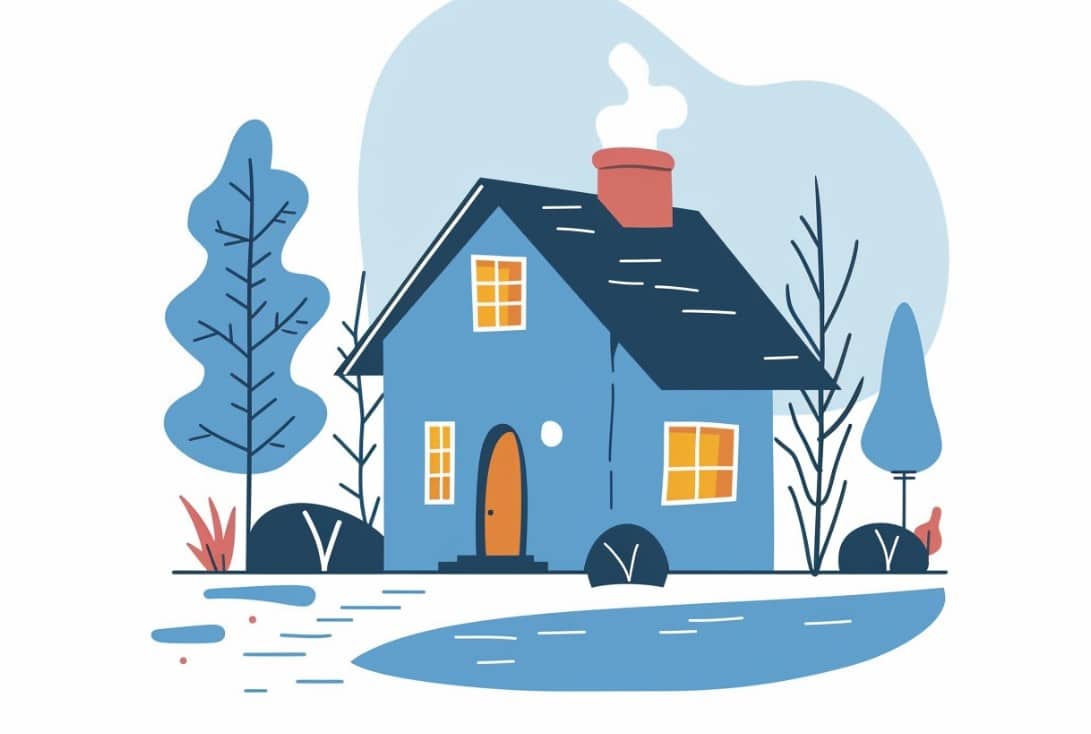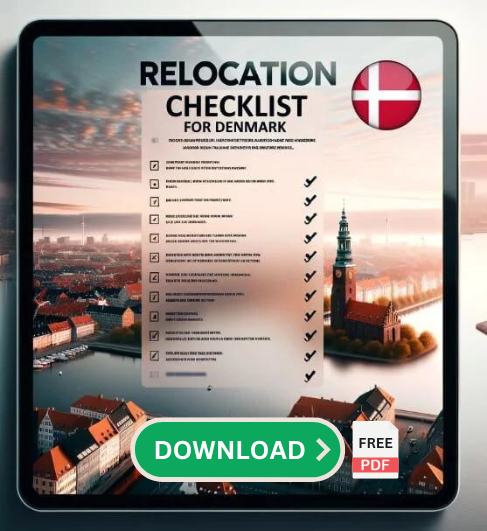Given its northern location, heating in Denmark is not just a luxury but a vital necessity. A well-functioning heating system ensures that residents can brave the cold months without any discomfort. Moreover, because Denmark prides itself on its commitment to sustainability, many of its heating options are both efficient and environmentally friendly.
As a foreigner in Denmark, understanding these heating systems will not only ensure a warm residence but also help in making informed decisions that align with the country's eco-friendly initiatives.
Key Takeaways
- Denmark offers diverse heating options tailored to different needs and preferences.
- District heating, a hallmark of Danish infrastructure, provides centralized warmth efficiently.
- Natural gas boilers are common and provide efficient heating, with fluctuating operational costs.
- Electric heaters are easy to install but can be costly to run in the long term.
- Heat pumps, while pricey upfront, offer environmental benefits and long-term savings.
- Biomass boilers and pellet stoves leverage renewable resources for sustainable heating.
Different Heating Options in Denmark
In Denmark, residents have various options when it comes to choosing how they'd like to heat their homes. The country's emphasis on energy efficiency and sustainability means many of these options are not just effective in terms of heat production but also environmentally responsible. Here's a closer look at some of the most common heating methods in Denmark.
District Heating (Centralized Heating)
District heating is one of the primary heating sources in Denmark, especially in urban areas. This centralized system provides heat to multiple residences and buildings by distributing hot water or steam from a central source. The method is both efficient and sustainable, primarily when generated from renewable energy sources.
Natural Gas Boilers
Natural gas boilers are another prevalent choice among Danish households. These systems use natural gas to heat water, which is then circulated through radiators or underfloor heating systems to warm the house. It's a straightforward method, but its sustainability is contingent upon the source of the natural gas.
Electric Heaters
For those who prefer a more straightforward and portable heating solution, electric heaters are available. These devices convert electric energy directly into heat.
While they might not be the primary source of heat in most Danish homes, they can be ideal for additional warmth or for spaces not connected to centralized systems.
Heat Pumps
Heat pumps are becoming increasingly popular in Denmark due to their energy efficiency. These devices extract heat from the outside air (even when it's cold!) and use it to warm the interior of a house. There are two main types: air-to-air and air-to-water, each serving a slightly different purpose but both providing a sustainable heating solution.
Biomass Boilers and Pellet Stoves
Biomass boilers and pellet stoves use organic materials like wood chips or pellets as a fuel source. These systems are considered renewable as the materials used are either waste products or can be replanted.
When burned, the biomass releases heat, which warms the water, subsequently distributing heat throughout the house. This method is carbon-neutral, making it another eco-friendly option in Denmark.

District Heating: Denmark's Primary Heating Source
District heating, a remarkable feat of engineering and community planning, stands as one of Denmark's proudest sustainable achievements. With a history that spans over a century, this system has evolved to meet the needs of a growing urban population while staying aligned with the country's green objectives.
What is District Heating and How Does It Work?
At its core, district heating is a centralized heating system that serves multiple homes, businesses, and buildings in a particular area. Instead of each building having its individual boiler or heat source, district heating uses a large, centralized facility to produce heat. This heat, typically in the form of hot water or steam, is then distributed through a network of insulated pipes to connected buildings.
The central heat source can vary: it might be a dedicated heating plant, a waste-to-energy plant, or even a combined heat and power plant (CHP) that simultaneously produces electricity. This versatility ensures optimal use of resources and minimizes waste.
Benefits: Efficiency, Sustainability, and Cost
One of the main advantages of district heating is its efficiency. By centralizing heat production, the system can achieve economies of scale, resulting in a more effective generation and distribution of heat.
District heating often employs renewable energy sources, such as geothermal energy, wind, or biomass. Additionally, many of the modern systems in Denmark harness waste heat — for instance, excess heat produced by industrial processes or electricity generation. This approach aligns perfectly with the country's dedication to sustainable practices.
While the initial connection to a district heating system might come with a cost, the overall expenses in the long run are often competitive, if not cheaper, than other heating methods. The system's efficiency translates to reduced energy consumption, which, in turn, leads to savings on heating bills.
How to Connect to District Heating Systems
For foreigners living in Denmark, the process of connecting to a district heating system largely depends on the location of their residence. Most urban areas, especially in larger cities, are already well-serviced by district heating networks.
- Check Availability: Begin by checking if your area is covered by a district heating network. This information is usually available on the municipality's website or through local utility providers.
- Apply for Connection: If available, the next step is to apply for a connection. This typically involves contacting the local district heating company and following their guidelines.
- Installation: Once approved, the necessary infrastructure, like sub-stations and pipes, will be installed to connect your residence to the network.
- Usage: After connection, residents can start receiving heat. Most systems come with meters to track consumption, ensuring you only pay for the heat you use.
Natural Gas Boilers
Natural gas boilers, though not as predominant as district heating, are still a prevalent heating choice in various parts of Denmark. These systems harness the energy from burning natural gas to heat water, which is then circulated through radiators or underfloor systems, effectively warming the interior spaces of homes and buildings.
Overview and Functionality
Natural gas boilers operate on a straightforward principle. They burn natural gas, which produces heat. This heat is used to warm up water in a closed system.
The hot water or steam generated is then circulated throughout the home or building through a series of pipes, radiators, or underfloor heating mechanisms. Once the heat dissipates from the water, it returns to the boiler to be reheated, thus completing the cycle.
Advantages and Disadvantages
Advantages:
- Consistent Heat Supply: Natural gas boilers provide a continuous and consistent heat supply, ensuring comfort even during the coldest months.
- Efficiency: Modern natural gas boilers are designed to maximize efficiency. High-efficiency models can convert nearly all the fuel they burn into usable heat, minimizing waste and reducing heating costs.
- Compact Design: These boilers are generally compact, allowing them to fit even in homes with limited space.
Disadvantages:
- Reliance on Fossil Fuels: Natural gas is a fossil fuel, and burning it releases carbon dioxide into the atmosphere. While it's cleaner than some other fossil fuels, it's not as sustainable as renewable energy sources.
- Fluctuating Prices: The cost of natural gas can be volatile, depending on global market conditions. This fluctuation can impact heating expenses.
- Installation Costs: Setting up a natural gas boiler system, especially in residences not previously equipped for it, can involve a considerable initial investment.
Tips on Maintenance
To ensure the longevity and efficiency of natural gas boilers, regular maintenance is paramount. Here are some general guidelines:
Annual Servicing
It's advisable to have a professional service your boiler at least once a year. This routine check can identify potential issues before they escalate, ensuring smooth operation.
Check for Leaks
Regularly inspect the system for any gas or water leaks. If you suspect a gas leak, it's essential to shut off the system and contact a professional immediately.
Clean the System
Over time, sediments and other impurities can accumulate in the boiler and the pipes. Flushing the system periodically can help prevent blockages and maintain efficiency.
Monitor the Flame
A healthy boiler flame should be blue. If it turns yellow or orange, it could indicate incomplete combustion and potential issues. In such cases, consult a technician.
Electric Heaters
While Denmark's primary focus revolves around centralized and renewable heating solutions, electric heaters serve as a versatile alternative, especially in situations where primary heating might be insufficient or unavailable. These heaters offer a simple and direct approach to heating, converting electric energy into warmth.
Types of Electric Heaters Available in Denmark
In the diverse market of electric heaters, various models cater to different needs. Some of the most common types include:
Convection Heaters
These heaters warm the air directly around them. As the hot air rises, it displaces the cold air, which then gets heated in turn. This circulation process results in an evenly heated room.
Radiant or Infrared Heaters
Instead of heating the air, radiant heaters emit infrared radiation that directly warms objects and people in its path. They offer quick heat and are ideal for warming specific areas or people rather than an entire room.
Oil-Filled Radiators
These are electric heaters that use oil as a heat reservoir. They heat the oil, which then circulates through the radiator coils, emitting warmth. While they might take longer to heat up, they retain heat for an extended period, even after being turned off.
Fan Heaters
These heaters combine elements of convection and radiant heating. They use a fan to blow air over a heated element, distributing the warmed air throughout the room.
Benefits: Portability, Ease of Use
One of the standout advantages of electric heaters is their portability. They can easily be moved from one room to another, making them perfect for targeted heating or spaces that lack a fixed heating system.
Electric heaters usually come with straightforward controls. Most models are plug-and-play, requiring minimal setup. Many modern units also feature thermostats or timers, providing users with greater control over the heating.
Cost Considerations and Efficiency
While electric heaters offer quick and convenient heating, it's essential to consider their efficiency and operating costs.
Electric heaters convert almost all the electric energy they consume into heat. However, it's worth noting that producing electricity, especially if it's from non-renewable sources, might not be as efficient or sustainable as direct heating methods.
Electricity prices in Denmark can be relatively high compared to other energy sources. Using electric heaters as a primary heating source throughout the winter might result in increased utility bills. However, for occasional use or supplemental heating, the cost might be justifiable.
Heat Pumps
Heat pumps, a symbol of modern and sustainable technology, are steadily gaining traction in Denmark's heating scene. They operate on the principle of extracting heat from one source and transferring it to another.
Given Denmark's commitment to sustainability, it's no surprise that heat pumps, with their energy efficiency and eco-friendly attributes, are becoming a preferred choice for many.
How Heat Pumps Work
Heat pumps function by moving heat rather than generating it. Using a refrigeration cycle similar to that of a refrigerator but in reverse, they extract heat from the outside environment and bring it inside. Surprisingly, even during cold weather, there's still ambient heat present in the air, which these devices can harness.
The two main types of heat pumps commonly used in Denmark are:
- Air-to-Air Heat Pumps: These systems extract heat from outdoor air and transfer it to indoor air. The process can be reversed in the summer, offering a cooling solution as well.
- Air-to-Water Heat Pumps: These are designed to heat water, which can then be used in radiators, underfloor heating systems, or even domestic hot water supplies.
Advantages of Heat Pumps
Heat pumps are remarkably efficient, as they only require electricity to run the compressor and circulate the refrigerant. The heat they transfer is essentially "free" energy sourced from the environment.
By relying on ambient heat and reducing the need for fossil fuels, heat pumps contribute to a reduction in greenhouse gas emissions.
While the initial investment can be substantial, the operational costs are often lower than conventional heating systems, especially if replacing older, less efficient systems.
Heat pumps can serve both heating and cooling needs, making them suitable for year-round use.
Considerations Before Installing
Before opting for a heat pump, it's essential to evaluate a few factors:
While heat pumps can extract heat even in colder conditions, their efficiency can diminish as temperatures drop significantly. It's crucial to choose a model designed for the specific climate conditions of your location.
Heat pumps, especially air-to-water models, might require a significant initial investment. However, the long-term savings often justify this cost.
Some heat pump setups, particularly those with larger outdoor units, might require ample space for installation.
Biomass Boilers and Pellet Stoves
In Denmark's quest for sustainable and eco-friendly energy solutions, biomass boilers and pellet stoves have emerged as popular alternatives to traditional fossil fuel-based heating systems. Leveraging organic materials like wood, crop residues, and even organic waste, these heating methods provide warmth while minimizing the carbon footprint.
What are Biomass Boilers?
Biomass boilers use organic materials, often referred to as 'biomass', to produce heat. This biomass can include wood chips, wood pellets, or even agricultural residues. The material is burned in the boiler to heat water, which can then be circulated through radiators or used for underfloor heating.
What are Pellet Stoves?
Pellet stoves, on the other hand, are more compact heating devices, designed primarily for space heating. They burn small, compressed wood pellets, delivering heat directly to the surrounding area. The pellets are automatically fed into the stove from a storage hopper, ensuring a steady flame and consistent heat.
Benefits of Biomass Heating
Sustainability: Biomass is renewable and derived from plants that can be regrown. When these materials are burned, the carbon dioxide they release is equivalent to the amount they absorb while growing, resulting in a carbon-neutral cycle.
Cost-Effective: Depending on the availability and local prices of biomass materials, operating these systems can be cost-effective in the long run, especially when compared to some fossil fuel-based heating methods.
Reduced Greenhouse Gas Emissions: Biomass fuels, being carbon-neutral, don't contribute to a net increase in atmospheric carbon dioxide, making them a cleaner heating option.
Key Considerations
- Fuel Storage: Biomass, especially in the form of wood chips or pellets, requires proper storage to ensure it remains dry and free from contaminants. This may necessitate a dedicated storage area, which could be a consideration for those with limited space.
- Maintenance: Regular cleaning is essential to maintain the efficiency of biomass boilers and pellet stoves. Ash residues must be removed, and the flue systems should be checked periodically for obstructions.
- Sourcing Biomass: While biomass is renewable, it's essential to source it responsibly. Look for suppliers who provide sustainably harvested or produced biomass materials.
- Initial Costs: The upfront cost of biomass boilers and pellet stoves, coupled with the installation, can be higher than traditional heating systems. However, the potential savings and environmental benefits often balance out this initial outlay.
Safety Tips and Maintenance for Heating Systems
Regardless of the chosen heating method, safety and regular maintenance are paramount to ensure efficient operation, prolong system longevity, and prevent potential hazards. Whether you've opted for district heating, natural gas boilers, electric heaters, heat pumps, or biomass solutions, here are some general safety and maintenance guidelines.
Safety Tips
Regular Inspections: Have a professional inspect your heating system at least once a year. This can identify potential issues, ensuring that everything is operating safely and efficiently.
Carbon Monoxide Detectors: For heating systems that burn fuels, like natural gas or biomass, it's vital to have a carbon monoxide detector in the home. This colorless, odorless gas can be lethal in high concentrations.
Proper Ventilation: Ensure that rooms with heating appliances have adequate ventilation. This helps dissipate any potential harmful gases and maintains a healthy indoor air quality.
Keep Flammables Away: Ensure that flammable materials, such as curtains, furniture, or paper, are kept at a safe distance from heaters and boilers.
Follow Manufacturer Instructions: Always refer to the user manual or guidelines provided by the manufacturer when operating or troubleshooting the heating system.
Maintenance Tips
Clean Regularly: Dust and debris can not only reduce the efficiency of your heating system but also pose potential fire hazards. Regularly clean surfaces, vents, and filters.
Monitor for Leaks: Whether it's water in the case of boilers or gas for systems like natural gas boilers, always be vigilant for signs of leaks. Addressing leaks promptly can prevent potential hazards and save on energy costs.
System Flushing: For water-based systems like district heating or boilers, flushing the system occasionally can help remove sediments and ensure efficient heat transfer.
Check Thermostats: Ensure that thermostats are functioning correctly. An inaccurate thermostat can lead to excessive energy consumption.
Update Insulation: Proper insulation can significantly boost the efficiency of any heating system. Ensure that windows, doors, and walls are adequately insulated to prevent heat loss.
Lubricate Moving Parts: For systems with moving parts, like some heat pumps, regular lubrication can reduce wear and tear, ensuring smooth operation.
Seek Professional Assistance: If you're unsure about any aspect of your heating system, it's always best to consult a professional rather than attempting DIY fixes.
Financial Considerations
Heating homes in Denmark involve various costs, from installation and setup to ongoing operational expenses. While some systems may offer savings in the long run, they might require a more substantial initial outlay.
| Heating System | Initial Costs | Operational Costs | Eco-friendliness |
| District Heating | Moderate | Stable | High |
| Natural Gas Boilers | Varies (Moderate-High) | Fluctuating | Moderate |
| Electric Heaters | Low | High | Depends on Electricity Source |
| Heat Pumps | High | Low | Very High |
| Biomass & Pellet Stoves | Moderate-High | Varies | High (With Sustainable Biomass) |
For foreigners navigating the heating landscape in Denmark, understanding the financial implications of each heating option can make decision-making more informed and budget-friendly.
Initial Setup and Installation Costs
District Heating: Connecting to district heating networks typically involves a connection fee, but the lack of need for in-house heating equipment often offsets this.
Natural Gas Boilers: The initial cost can vary based on the boiler's capacity and type. However, modern condensing boilers, while more expensive, tend to be more efficient, which can result in long-term savings.
Electric Heaters: These heaters usually have a low upfront cost, making them an attractive option for those on a tight budget or in temporary living situations.
Heat Pumps: The cost of heat pumps can be significant, especially for air-to-water models, but they often lead to decreased monthly heating bills.
Biomass Boilers and Pellet Stoves: The initial investment here is moderate to high, but much depends on the model and capacity chosen. Remember to factor in the cost of setting up a storage solution for the biomass.
Operational Costs
District Heating: Typically, district heating offers a stable and predictable monthly fee, but prices can vary based on consumption and local provider rates.
Natural Gas Boilers: The operational cost depends on gas prices, which can fluctuate. However, they often prove more cost-effective than electricity-based heating in Denmark.
Electric Heaters: While convenient, they can be costly to run, especially during peak winter months, given Denmark's electricity prices.
Heat Pumps: Despite the high initial cost, their efficiency often leads to reduced monthly energy bills.
Biomass Boilers and Pellet Stoves: The cost of biomass, whether it's wood chips or pellets, can vary. It's essential to have a reliable and cost-effective source to ensure economical operation.
Grants and Subsidies
The Danish government, aligned with its sustainable vision, often offers grants, subsidies, or tax reductions for those opting for eco-friendly heating solutions. It's advisable to explore available incentives when considering a new heating system.
Long-term Value
When assessing the financial aspects, it's crucial to think long-term. While some systems may have higher initial costs, the operational savings and potential increase in property value can make them worthy investments.
Choosing the Right Heating Solution
Selecting the most suitable heating solution for your home in Denmark can be a complex endeavor, especially for those unfamiliar with the local context. Various factors play into the decision-making process, each holding significance based on individual preferences, requirements, and circumstances. Here’s a guide to help you navigate these choices and find the ideal heating system for your home.
Understand Your Needs
Before diving into available options, it's essential to assess:
Size and Type of Property: A compact apartment will have different heating requirements compared to a spacious family home.
Duration of Stay: If you're in Denmark temporarily, a more straightforward solution might be preferable. In contrast, long-term residents might lean towards permanent, efficient systems.
Aesthetic Preferences: For some, the look and feel of heating solutions matter. For example, a modern pellet stove might double as a stylish centerpiece in a living room.
Weigh the Pros and Cons
Each heating method comes with its set of advantages and challenges:
District Heating: Ideal for those seeking hassle-free solutions in areas with existing infrastructure.
Natural Gas Boilers: Efficient and cost-effective, especially for larger homes. However, they rely on fluctuating gas prices.
Electric Heaters: Quick and easy to install, yet they might prove expensive to run in the long run.
Heat Pumps: An eco-friendly choice with long-term savings but requires a considerable initial investment.
Biomass Boilers and Pellet Stoves: Sustainable and often cost-effective, but require regular maintenance and a reliable biomass supply.
Consider Environmental Impact
Denmark's commitment to sustainability is commendable. Residents, both local and foreign, are often inclined to make eco-friendly choices. Weigh the environmental implications of your heating choices, considering factors like carbon emissions, renewable resources, and energy efficiency.
Think Financially
As discussed earlier, understanding both the upfront and operational costs can make the decision more budget-friendly. Always factor in potential savings, available grants, and the long-term value of the investment.
Consult Professionals
It can be invaluable to seek advice from local experts. Whether it's a heating engineer, an energy consultant, or even neighbors who've been living in Denmark for a while, their insights can guide your decision based on local nuances and experiences.
Future-Proof Your Decision
Technology and energy solutions continually evolve. When investing in a heating system, consider its longevity, adaptability to future technologies, and potential resale value if you ever decide to move.
In essence, choosing the right heating solution in Denmark requires a blend of research, self-assessment, and consultation. By aligning your individual needs with the available options, you can ensure a warm, comfortable, and efficient living environment.




![Buying a House in Denmark: How It Works ([year]) buying a house in denmark](https://denmarkexpat.com/wp-content/uploads/2023/09/buying-a-house-in-denmark-150x150.jpg)

